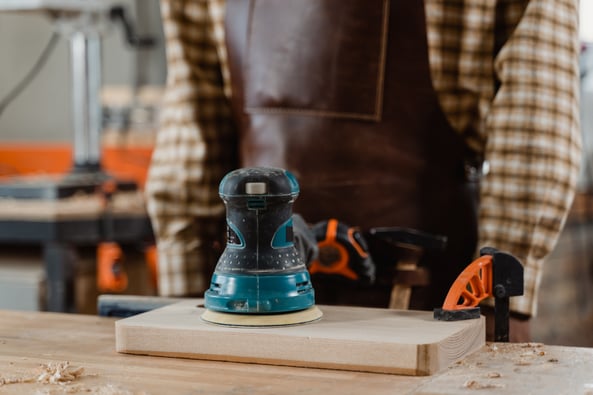Our biggest deals of the year are coming just in time for Black Friday. Save big on CNC machines,...
Tips for Keeping Your Workshop Organized
We know how important it is to keep your workshop organized and safe. Not only does a well-organized workshop mean that you can work more efficiently and consistently produce high-quality work, but it also means you're reducing the risk of any accidents or injuries. To help you out, we've pulled together some tips and best practices for keeping your workshop organized and safe:
Establish a Clear Workflow
The first step in organizing your CNC workshop is to establish a clear workflow. This means deciding on a logical sequence of tasks and designating specific areas for each stage of the process, such as a cutting area, assembly area, and finishing area. By establishing a clear workflow, you will be able to keep your workshop organized and reduce the risk of accidents, as each tool and material will have a designated location.
Establishing a clear workflow is a crucial step in organizing your CNC workshop. A clear workflow involves breaking down the production process into a series of tasks and deciding on the best order in which to perform these tasks. For example, in a typical cabinetmaking workshop, you may have a cutting area for cutting the materials to size, an assembly area for assembling the cabinet boxes, doors, and drawers, and a finishing area for sanding and applying the final finish to the cabinets.
By designating specific areas for each stage of the process, you can ensure that each tool and material is kept in its proper place, reducing the risk of accidents and making it easier to find what you need when you need it. This can also help you to work more efficiently, as you will not waste time searching for tools or materials that are not in their designated location.
Additionally, by establishing a clear workflow, you can also identify areas of the workshop that may need to be reorganized or improved to make the production process more efficient. For example, you may discover that your cutting area is too small, or that your assembly area does not have enough space for all of your tools and materials. By addressing these issues early on, you can improve the overall efficiency of your workshop and make it a safer and more enjoyable place to work.
Keep Your Equipment and Tools in Good Condition
Regular maintenance and cleaning of your tools is crucial - for an efficiently-run shop and to extend the life of your tools. If you're looking for products that you can use to clean your tools, we've compiled a list of some of the most popular options (with pros & cons)*:
 WD-40 Specialist Long-Term Corrosion Inhibitor
WD-40 Specialist Long-Term Corrosion Inhibitor
Pros: Protects metal surfaces from rust and corrosion for up to 2 years, dries quickly and leaves no residue, safe for use on most metals and alloys.
Cons: Not recommended for use on surfaces that will be exposed to food or drink. May leave an oily residue if not fully wiped off.
ZEP Heavy-Duty Degreaser
Pros: Powerful formula for removing grease and grime, safe for use on most surfaces, can be used on both CNC tools and machinery.
Cons: Can be harsh on skin and should be used with protective gloves. Strong odor can be unpleasant.
Simple Green Industrial Cleaner & Degreaser
Pros: Environmentally friendly, biodegradable formula, safe for use on most surfaces. Can be used on both CNC tools and machinery.
Cons: Can be less effective than harsh chemical degreasers. May require multiple applications for heavy-duty cleaning.
*Note: Always read and follow the manufacturer's instructions and warnings when using any CNC tool cleaning products. Before using a new product, test it on a small, inconspicuous area first to ensure it won't damage the surface of your tools or machinery.
Have a Safety Plan
Your safety plan should include guidelines for safe work practices, such as wearing protective equipment, using proper lifting techniques, and avoiding hazardous areas. It should also outline procedures for responding to accidents and emergencies (like a fire). An example of something you could include is wearing the appropriate PPE to reduce the risk of eye, ear, and respiratory injuries. (This could include safety glasses, ear protection, gloves, and a dust mask.)
Regularly review and update the safety plan. To ensure that your safety plan is effective, make sure you're reviewing it on a consistent basis. Update your procedures for responding to emergencies, incorporate new safety technologies, and train employees on the latest safe work practices.
By following these tips, you can keep your CNC workshop organized and safe, allowing you to focus on producing high-quality work and enjoying your craft. Whether you're just starting out or have been in the business for years, these tips will help you to create a safe and productive workshop environment.
Interested in adding a robust CNC machine to your workshop? Check out the X-Carve Pro, the all-in-one CNC system built to produce high-quality cabinets, built-ins, and more.




